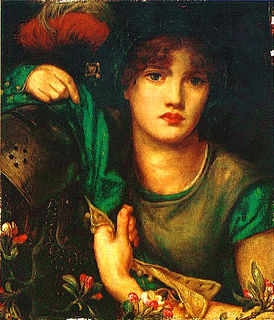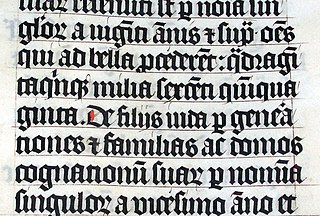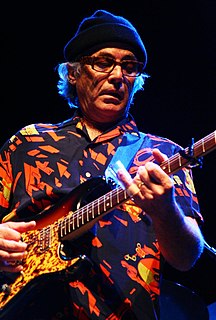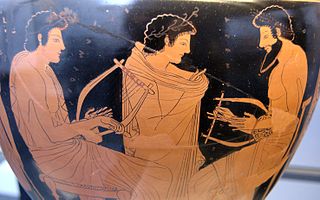An abbreviation is a shortened form of a word or phrase. It consists of a group of letters taken from the word or phrase. For example, the word abbreviation can itself be represented by the abbreviation abbr., abbrv., or abbrev.
The International Phonetic Alphabet (IPA) is an alphabetic system of phonetic notation based primarily on the Latin alphabet. It was devised by the International Phonetic Association in the late 19th century as a standardized representation of the sounds of spoken language. The IPA is used by lexicographers, foreign language students and teachers, linguists, speech-language pathologists, singers, actors, constructed language creators and translators.

In music, a note is the pitch and duration of a sound, and also its representation in musical notation. A note can also represent a pitch class. Notes are the building blocks of much written music: discretizations of musical phenomena that facilitate performance, comprehension, and analysis.
In music, an accidental is a note of a pitch that is not a member of the scale or mode indicated by the most recently applied key signature. In musical notation, the sharp, flat, and natural symbols, among others, mark such notes—and those symbols are also called accidentals.
A soprano [soˈpraːno] is a type of classical female singing voice and has the highest vocal range of all voice types. The soprano's vocal range (using scientific pitch notation) is from approximately middle C (C4) = 261 Hz to "high A" (A5) =880 Hz in choral music, or to "soprano C" (C6, two octaves above middle C) =1046 Hz or higher in operatic music. In four-part chorale style harmony, the soprano takes the highest part, which usually encompasses the melody.
The soprano voice type is generally divided into the coloratura, soubrette, lyric, spinto, and dramatic soprano.
In music, solfège or solfeggio, also called sol-fa, solfa, solfeo, among many names, is a music education method used to teach pitch and sight singing of Western music. Solfège is a form of solmization, and though the two terms are sometimes used interchangeably, the systems used in other music cultures such as swara, durar mufaṣṣalāt and Jianpu are discussed in their respective articles.

A chord, in music, is any harmonic set of pitches consisting of two or more notes that are heard as if sounding simultaneously.

A burlesque is a literary, dramatic or musical work intended to cause laughter by caricaturing the manner or spirit of serious works, or by ludicrous treatment of their subjects. The word derives from the Italian burlesco, which, in turn, is derived from the Italian burla – a joke, ridicule or mockery.

The modern English alphabet is a Latin alphabet consisting of 26 letters, each having an upper- and lower-case form. The same letters constitute the ISO basic Latin alphabet. The alphabet's current form originated in about the 7th century from the Latin script. Since then, various letters have been added, or removed, to give the current Modern English alphabet of 26 letters:

"Greensleeves" is a traditional English folk song and tune, over a ground either of the form called a romanesca; or its slight variant, the passamezzo antico; or the passamezzo antico in its verses and the romanesca in its reprise; or of the Andalusian progression in its verses and the romanesca or passamezzo antico in its reprise. The romanesca originated in Spain and is composed of a sequence of four chords with a simple, repeating bass, which provide the groundwork for variations and improvisation. British neurologist Oliver Sacks wrote in Musicophilia that the melody of Greensleeves was found to be one of the most common and problematic earworms.
A broadside ballad by this name was registered at the London Stationer's Company in September 1580, by Richard Jones, as "A Newe Northen Dittye of ye Ladye Greene Sleves". Six more ballads followed in less than a year, one on the same day, 3 September 1580, then on 15 and 18 September, 14 December, 13 February 1581, and August 1581. It then appears in the surviving A Handful of Pleasant Delights (1584) as A New Courtly Sonnet of the Lady Green Sleeves. To the new tune of Green Sleeves.
The voiced alveolar stop is a type of consonantal sound, used in many spoken languages. The symbol in the International Phonetic Alphabet that represents voiced dental, alveolar, and postalveolar stops is ⟨d⟩, and the equivalent X-SAMPA symbol is d.
The alveolar nasal is a type of consonantal sound used in numerous spoken languages. The symbol in the International Phonetic Alphabet that represents dental, alveolar, and postalveolar nasals is ⟨n⟩, and the equivalent X-SAMPA symbol is n.

Blackletter, also known as Gothic script, Gothic minuscule, or Textura, was a script used throughout Western Europe from approximately 1150 to well into the 17th century. It continued to be used for the Danish language until 1875, and for German, Estonian and Latvian until the 20th century. Fraktur is a notable script of this type, and sometimes the entire group of blackletter faces is incorrectly referred to as Fraktur. Blackletter is sometimes referred to as Old English, but it is not to be confused with the Old English language, which predates blackletter by many centuries and was written in the insular script or in Futhorc.
The Apostolic Fathers were Christian theologians who lived in the 1st and 2nd centuries AD, who are believed to have personally known some of the Twelve Apostles, or to have been significantly influenced by them. Their writings, though popular in Early Christianity, were ultimately not included in the canon of the New Testament once it reached its final form. Many of the writings derive from the same time period and geographical location as other works of early Christian literature that did come to be part of the New Testament, and some of the writings found among the Apostolic Fathers' seem to have been just as highly regarded as some of the writings that became the New Testament.

The open-mid back rounded vowel, or low-mid back rounded vowel, is a type of vowel sound, used in some spoken languages. The symbol in the International Phonetic Alphabet that represents this sound is ⟨ɔ⟩. The IPA symbol is a turned letter c and both the symbol and the sound are commonly called "open-o". The name open-o represents the sound, in that it is like the sound represented by ⟨o⟩, the close-mid back rounded vowel, except it is more open. It also represents the symbol, which can be remembered as an o which has been "opened" by removing part of the closed circular shape.
The Locrian mode is either a musical mode or simply a diatonic scale. On the white piano keys, it is the scale that starts with B. Its ascending form consists of the key note, a half step, two whole steps, a further half step, and three more whole steps.

In music, a guitar chord is a set of notes played on a guitar. A chord's notes are often played simultaneously, but they can be played sequentially in an arpeggio.
The implementation of guitar chords depends on the guitar tuning. Most guitars used in popular music have six strings with the "standard" tuning of the Spanish classical-guitar, namely E-A-D-G-B-E' ; in standard tuning, the intervals present among adjacent strings are perfect fourths except for the major third (G,B). Standard tuning requires four chord-shapes for the major triads.
Economic methodology is the study of methods, especially the scientific method, in relation to economics, including principles underlying economic reasoning. In contemporary English, 'methodology' may reference theoretical or systematic aspects of a method. Philosophy and economics also takes up methodology at the intersection of the two subjects.
John Anthony Caldwell is an English musicologist and composer.










